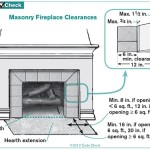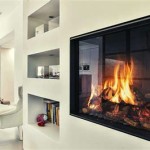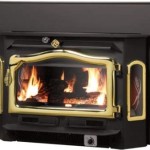Gas Fireplace Spark Arrestor: Function, Importance, and Maintenance
A gas fireplace offers the aesthetic appeal and warmth of a traditional wood-burning fireplace without the same complexities and mess. However, proper operation and safety remain paramount. One critical component that contributes to the safety and efficiency of a gas fireplace is the spark arrestor. This article will delve into the purpose, function, importance, and maintenance of a gas fireplace spark arrestor.
The primary function of a spark arrestor, also sometimes called a chimney cap, is to prevent sparks and embers from escaping the fireplace chimney. While gas fireplaces produce significantly fewer sparks than wood-burning fireplaces, incomplete combustion or malfunctions can lead to the emission of hot particles. These particles, if released into the environment, can pose a fire hazard, particularly in areas with dry vegetation or combustible roofing materials. The spark arrestor acts as a physical barrier, trapping these particles within the chimney system.
Beyond preventing fire hazards, a spark arrestor also plays a role in protecting the chimney from external elements. Rain, snow, and debris can enter the chimney, potentially causing damage and reducing the overall efficiency of the fireplace. The spark arrestor’s mesh screen and cap design help to prevent these elements from entering the chimney flue.
Furthermore, a spark arrestor can deter animals, such as birds, squirrels, and raccoons, from nesting inside the chimney. Animal nests can obstruct airflow, leading to dangerous carbon monoxide buildup inside the home. The spark arrestor’s presence makes it difficult for animals to gain access to the chimney, reducing the risk of such blockages.
Key Point 1: Understanding the Function of a Spark Arrestor
The core function of a gas fireplace spark arrestor revolves around containment. It's designed to capture any errant sparks or embers that might escape the chimney. This is achieved through a mesh screen, typically made of stainless steel or galvanized steel, that covers the chimney opening. The mesh is fine enough to trap hot particles but allows combustion gases to escape freely.
The spark arrestor operates on a simple principle: any solid particles larger than the mesh openings are prevented from exiting the chimney. This prevents the spread of fire, particularly in areas surrounding the home. The size of the mesh openings is crucial; they must be small enough to effectively trap sparks but large enough to maintain adequate airflow. This balance ensures both safety and proper fireplace operation.
In addition to the mesh screen, most spark arrestors incorporate a cap or lid that further protects the chimney from the elements. This cap deflects rain and snow, preventing water damage to the chimney liner and fireplace structure. It also helps to reduce downdrafts, which can cause smoke and fumes to enter the home.
The installation of a spark arrestor must be done correctly to ensure its effectiveness. It should be securely attached to the chimney, typically using screws or clamps, to prevent it from being dislodged by wind or weather. The spark arrestor should also be properly sized for the chimney opening to ensure a tight fit and prevent gaps through which sparks could escape.
Different types of spark arrestors are available, each designed for specific chimney sizes and shapes. It is important to select the correct type of spark arrestor for your gas fireplace to ensure optimal performance and safety. Consulting with a qualified fireplace technician can help in determining the appropriate spark arrestor for your needs.
Key Point 2: Importance of Spark Arrestor for Safety and Efficiency
The importance of a spark arrestor extends beyond simply preventing fires. It plays a critical role in maintaining the overall safety and efficiency of the gas fireplace system. By preventing the escape of sparks, it minimizes the risk of accidental fires, protecting the home and surrounding property.
The accumulation of debris inside the chimney can significantly reduce the efficiency of the gas fireplace. Leaves, twigs, and animal nests can obstruct airflow, leading to incomplete combustion and reduced heat output. This can result in higher energy bills and a less comfortable living environment. A properly installed spark arrestor helps to prevent this debris from entering the chimney, maintaining optimal airflow and efficiency.
Without a spark arrestor, the chimney is vulnerable to water damage from rain and snow. Water can seep into the chimney liner, causing corrosion and deterioration. Over time, this can lead to expensive repairs or even the need to replace the entire chimney system. A spark arrestor with a cap or lid provides a barrier against these elements, extending the lifespan of the chimney and saving on costly repairs.
Furthermore, the presence of animals nesting inside the chimney poses a significant safety hazard. Animal nests can block the chimney flue, preventing combustion gases from escaping properly. This can lead to a buildup of carbon monoxide inside the home, which is a colorless, odorless gas that can be fatal. A spark arrestor acts as a deterrent, preventing animals from gaining access to the chimney and reducing the risk of carbon monoxide poisoning.
Local building codes and regulations often require the installation of a spark arrestor on all fireplaces, including gas fireplaces. Compliance with these regulations is essential for ensuring the safety of the home and its occupants. Failure to comply can result in fines or other penalties. Regular inspection of the spark arrestor is also important to ensure that it is in good working condition and meets all applicable safety standards.
Key Point 3: Maintenance and Inspection of a Gas Fireplace Spark Arrestor
Proper maintenance and regular inspection are essential for ensuring the continued effectiveness of a gas fireplace spark arrestor. Over time, the spark arrestor can become clogged with debris, corroded, or damaged, reducing its ability to function properly. Regular cleaning and inspection can help to identify and address these issues before they become major problems.
The frequency of maintenance depends on several factors, including the surrounding environment and the frequency of fireplace use. In areas with heavy vegetation or frequent snowfall, more frequent cleaning may be necessary. As a general rule, the spark arrestor should be inspected at least once a year, typically at the beginning of the heating season.
The cleaning process typically involves removing any accumulated debris from the mesh screen and cap. This can be done using a brush, vacuum cleaner, or garden hose. Stubborn debris may require the use of a specialized chimney cleaning tool. Care should be taken not to damage the mesh screen during the cleaning process.
During the inspection, look for signs of corrosion, damage, or wear. Check for holes in the mesh screen, loose connections, or rust. If any of these issues are present, the spark arrestor should be repaired or replaced. It is important to use a spark arrestor that is specifically designed for gas fireplaces and meets all applicable safety standards.
If you are not comfortable performing the maintenance and inspection yourself, it is best to hire a qualified chimney sweep or fireplace technician. These professionals have the knowledge and experience to properly clean and inspect the spark arrestor and identify any potential problems. They can also provide recommendations for repairs or replacements as needed.
In addition to the spark arrestor, it is also important to regularly inspect and maintain the entire gas fireplace system. This includes checking the gas lines for leaks, cleaning the burner assembly, and inspecting the venting system. Regular maintenance can help to ensure the safe and efficient operation of the gas fireplace and prevent costly repairs in the future.
Finally, keeping records of maintenance and inspections is good practice. These records can be useful for tracking the condition of the spark arrestor and the overall fireplace system over time. They can also be helpful in the event of an insurance claim or if you decide to sell your home.

Interior Exterior Spark Arrestors The Importance

Exterior Interior Spark Arrestors Prevent House Fires

Interior Exterior Spark Arrestors The Importance

The Power Of Spark Arrestors For Fireplacex 2nd Generation Chimneys Inc

Spark Arrestors Chimney Caps American Masonry

Why You Should Consider A Spark Arrestor For Your Fireplace And Chimney Lou Curley S Service

What Is A Spark Arrestor On Chimney And It Necessary

What Is A Spark Arrestor On Chimney And It Necessary

Barton 39 In W X 29 H 1 Panel Clear Gold Fireplace Screen Guard Tempered Glass Spark 95058 The Home Depot

Exterior Interior Spark Arrestors Prevent House Fires
Related Posts








